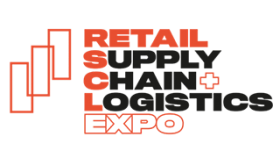Safeguarding Commercial Fire and Electrical Safety Across South England.
Road markings are the future
The Road Safety Markings Association detail the need for improved maintenance of road markings and the post-pandemic benefits of well-maintained road markings
While they do not receive enough attention and are often overlooked in comparison to the plague of potholes, road markings are safety-critical highway infrastructure which are of paramount important to the connectivity of the country. Across the UK, thousands of miles of roads and markings contribute to safe journeys for the masses.
Having clear, visible, professionally installed, reflective road markings benefits all of us. It results in roads and road users being safer and at less risk of an accident or collision and getting from point A to point B more quickly. When the road marking infrastructure is sound, we are safer and more confident in using the roads. This results in fewer collisions, thereby causing less congestion. Where there is less congestion, there are fewer vehicles at a standstill with their engines running, which in turn results in fewer emission hotspots.
Active travel has been a term in most people’s periphery for a number of years, however the pandemic has brought it to the forefront of transport choices and the trend continues to accelerate.
During the height of lockdown, when many of us were furloughed or working home, many key-worker road marking contractors were installing safety-critical road infrastructure, making use of the quieter roads. As lockdowns eased, the focus on ‘return to normal’ has increased and traffic has more-or-less returned to pre-COVID levels, however, it is likely that we will see more people taking up alternative forms of getting from A to B through walking and cycling if the Government’s green ambitions are to be met.
Road markings form the basis of any active travel infrastructure, allowing for segregated, demarcated travel lanes which allows cyclists to ride where they feel safer and more confident, out of the way of passing motorists. Road markings and demarcated cycle lanes will encourage an increase in the number of cyclists, a reduction in vehicular traffic and ultimately, a reduction in vehicular emissions. Not all cyclists are confident enough to cycle next to cars, vans and lorries driving at higher speeds; many would be keen to do more to reduce their own carbon footprint, but it will be novel to many and they may need some help along the way. Investment in active travel infrastructure and demarcated cycle lanes will result in highway authorities achieving reductions in both congestion and vehicular emissions.
The question arises time and again however, where does the money for these new infrastructure schemes come from when local authorities are already struggling to find enough in the budgets for general maintenance to roads and markings that are already in place?
It is well known that highway budgets are stretched, in fact the Annual Local Authority Road Maintenance (ALARM) survey (2021) reports that, despite a 15% increase in highway maintenance budgets, the bill to fix the backlog of maintenance work on local roads in England and Wales is more than £10bn. Maintaining and fixing highways is essential to the connectivity of the country and local authorities are having to do more with less, for which they should be applauded, but there will come a time where no more can be done. One way of ensuring that local authorities receive value for money is to only allow professional, accredited contractors to work on their networks – ensuring road marking contractors are accredited to the National Highways Sector Scheme No. 7 (NHSS7) ensures the local authority, and ergo, the tax-paying public receive the best value for money.
NHSS7 ensures that road marking contractors operate to the optimum level of professionalism, giving local authorities the confidence that their requirements are being fulfilled to the highest standards in a safe environment. A move away from ‘cheapest’ to ‘best value for money’ is the only way that this investment will have positive lasting effects across the local roads network. Employing the services of a NHSS7 accredited contractor means employing a contractor whose operatives are trained and qualified for the job and removes the risk of allowing a potential unqualified contractor to work on a local authority’s most expensive asset – their roads.
There is a reason why National Highways mandates that all road marking contractors working on the Strategic Road Network (SRN) are NHSS7 accredited, they do not want to take the risk of employing an unqualified, untrained contractor and allow them to install substandard road markings on their network; yet it is not mandated by Government that this requirement is reflected across all public roads, including contractors employed by local authorities. Considering that almost all journeys begin and end on local roads which carry a greater volume of traffic and combined are significantly longer than the SRN, it is egregious that in some cases accreditation is not a requirement to ensure efficient and long-lasting maintenance work that will save the tax-payers money.
Local authorities need to recognise also the limitations of their own in-house knowledge when there is a wealth of specialist knowledge within supply chains and the wider industry. Greater collaborative working can bring further benefits and contractors should not just be seen as a delivery partner; they have a huge role to play in technical support and guidance as their level of knowledge and expertise is insurmountable.
Professionally maintained road markings
Since the pandemic, we continue to hear the terms ‘levelling up’ and ‘build back better’ alongside the strategies to encourage autonomous vehicles (AVs) on the roads that are ‘safer’ than those driven by humans. Whilst AV technology continues to push forward at a lightening pace, at this point in time and for the foreseeable future they all require one key thing, which is often overlooked, to work successfully…appropriately installed and professionally maintained road markings.
The importance of road markings in allowing AVs to function cannot be overstated. Road markings are one of the key reference elements for such vehicles to traverse a carriageway safely, allowing the vehicle to maintain its lane position. It has been clarified in reports that degraded or missing markings will compromise how and where autonomous vehicles are able to function. If the government is serious about being a world-leader in AVs, it must not only be able to provide the funding for road markings to be maintained to a high standard but also understand the absolutely vital role that they have.
It is also important not to forget that for the next 20-30 years as a minimum, the UK is likely to operate a diverse ‘mixed fleet’ of vehicles and we must be mindful not to ignore the requirements of human drivers when embracing the capabilities of machines. In the short to medium term It is highly likely that vehicles will remain driver-controlled and/or Advanced Driver Assistance Systems (ADAS) equipped. This is an environment where the importance of road markings again cannot be overstated.
Action is required now by all those responsible for road maintenance to ensure road markings are maintained to an appropriate level for both human and machine requirements, and that road markings on all UK road networks are professionally installed to reap the safety and environmental benefits that AVs can bring.
It is of the utmost importance to have high quality, well-maintained road markings installed by professional, NHSS7 certified, contractors. This must now move to the forefront in the minds of key highways decision makers. ‘Mixed fleet’ road users and also support to environmental strategies as a cost-effective solution to reducing emission hotspots and encouraging active travel must now become a priority.
Not investing wisely runs the risk of meaningful changes to infrastructure not being felt, of improvements to air quality and vehicular emissions targets not being met, and of previously entrenched travel means permanently returning to the norm. Now is the time to seize the opportunity – invest in road markings and maximise returns.
Company Focus
Event Diary
An essential date in the calendar for those responsible for homeland and global security; International Security Expo returns to Olympia in London on 30 September & 1 October 2025.
Every sport, from grassroots football to world-class tournaments, depends on one constant: high-quality playing surfaces and well-maintained green spaces.
Tickets: Free registration available at www.retailscl.com
The Retail Supply Chain & Logistics Expo is the UK’s leading event for retail supply chain and logistics professionals, showcasing the latest innovations in fulfilment, 3PL, AI-driven automation, and warehouse technology.
Supplier Profiles
Bauder Accepts Keys to its New UK Distribution Centre at Gateway 14
Bauder marked a major milestone in its UK expansion with the official handover of a brand
Words of World: Bridging language barriers with excellence
At Words of World, we specialise in professional translation and interpreting, d
Latest Features
The British Institute of Cleaning Science (BICSc) and the Cleaning & Support Services Association (CSSA) have successfully completed a groundbreaking project aimed at exploring the future of cleaning. This collaboration marks a significant milestone in the cleaning industry, reflecting a shared commitment to embracing innovation with confidence.
The Crown Commercial Service’s (CCS) new framework on Language Services (RM6302), dealing with translation, transcription and interpreting, is live, running from 7th May 2025 to 6th May 2028.










